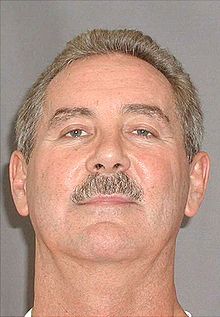FBI Affidavit Claims California Solar Company Is $800 Million Ponzi Scheme
A California company that purported to build and lease mobile solar generators failed to disclose to investors that it was running a "Ponzi-type arrangement" using new investor money to pay old investors, according to an FBI agent's 60-page affidavit. The allegations come after DC Solar Inc., owned by California residents Jeff and Paulette Carpoff, had its headquarters raided by FBI agents in December 2018 and filed for Chapter 11 bankruptcy protection earlier this month in a Nevada bankruptcy court. According to the affidavit, which is embedded below, the company is believed to have raised approximately $810 million from at least 12 investors.
According to the FBI agent's affidavit (the "FBI Affidavit"), the Carpoffs operated two closely held businesses collectively as DC Solar beginning no later than December 2009. DC Solar purported to be in the business of building, assembling, and leasing mobile solar generators ("MSGs"), which essentially consisted of solar panels placed on a wheeled trailer. The company told interested investors that MSGs were in high demand from cellular companies to provide emergency power to cellular towers or to power light structures at sporting events.
DC Solar solicited potential investors to purchase MSGs that would then purportedly be leased out by DC Solar to third parties. The company touted the favorable tax treatment of the investment and the ability to "finance" nearly 75% of the $150,000 purchase price that would then be repaid through lease payments from third parties. For example, the federal tax code allowed purchasers of alternative energy sources like an MSG to claim significant tax credits of up to 30% of the purchase price as well as other savings. Investors were told that they would only have to pay $45,000 in cash of the $150,000 purchase price per MSG, with the remainder financed by a DC Solar subsidiary. The $45,000 purchase price is also the maximum tax credit a purchaser would be able to claim from the purchase - in essence offsetting the entire initial cash outlay. That investor would then execute a promissory note to pay the remaining 70% of the purchase price to a DC Solar entity with the understanding that the resulting lease revenues would be sufficient to cover payments on the promissory note. As the FBI Affidavit explained,
The purported lease revenue from third parties was a critical component of the transaction because the investment funds provided no money other than that initially contributed by the investors that covered only approximately 30% of the transaction. Without some mechanism for payment of the remaining approximately 70% of the sales transaction, the transaction would facially be a sham. As such, the existence of lease revenue from third parties to Company D was required in order for the investors to obtain their tax benefits and to entice investors to make the initial investment of $45,000 per MSG.
At least 12 investors were identified that provided nearly $700 million to DC Solar through the creation of nearly three-dozen investment vehicles. DC Solar also obtained nearly $100 million in investments from two financial institutions under similar circumstances.
Integral to DC Solar's claims to investors was its ability to generate sufficient MSG lease revenues to cover investors' promissory note payments. Potential investors were told that DC Solar generated tens of millions of dollars in lease revenues from third parties leases comprised of both long-term and short-term lease arrangements.
According to the FBI Affidavit, these claims were false. As the Affidavit explains,
In truth, the evidence developed in the investigation to date demonstrates that over 90% of the money that Company D has claimed as lease revenue, and which it has used to pay the investment funds, was actually the result of transfers from Company S. The money from Company S is investor money as Company S has very little other significant sources of revenue or income other than through the investment funds. The evidence developed so far demonstrates that Company S is the primary source of income for Company D and merely pays obligations due to investors with money raised from that investor and later investors.
Based on my training and experience, I recognize the flow of investor money from Company S to Company D and then from Company D to the investment funds has permitted and continues to permit Individual 1 and others to conceal the absence of third party leases and to create the appearance that the MSGs are generating lease revenue when they are not. In my training and experience, the use of investor money to lull investors into believing the transaction is legitimate and profit making is evidence of a Ponzi-type investment fraud scheme.
In short, the Affidavit claims that more than 90% of the purported lease revenues were simply the result of circular transactions comprised of other investor funds. The Affidavit also claimed that, in contrast to DC Solar's representations that more than 12,000 MSGs were in use as of March 2018, only 3,000 to 5,000 MSGs were actually in use. Instead, the Affidavit alleges, the "vast majority of the MSGs that the Company has manufactured and sold to the investment funds are stored in lots throughout California..."
The Affidavit alleges that investor funds were diverted to, among other things, purchase over 20 real estate parcels and 90 vehicles, fund approximately $19 million in private jet travel, and apparently fund an independent baseball team. That team, the Martinez Clippers, recently indicated to the league commissioner that the Carpoffs "weren’t going to be in a position to operate the team."
Ponzitracker is not aware of any response to date by the Carpoffs or DC Solar.
The FBI Affidavit is below:


